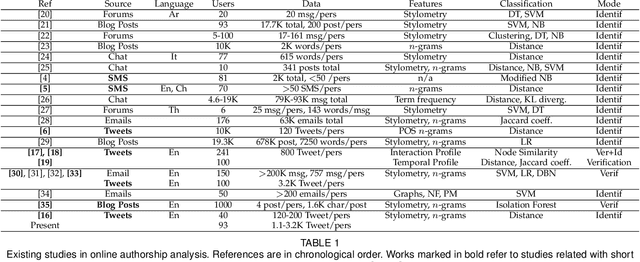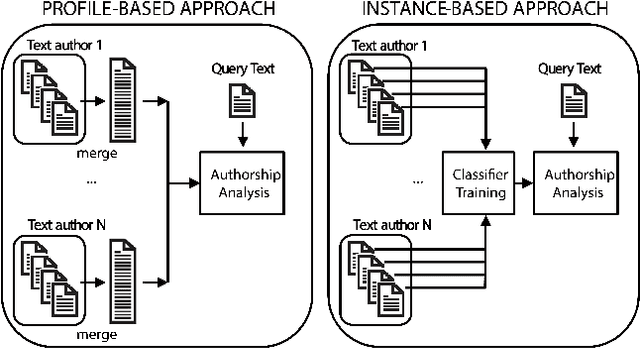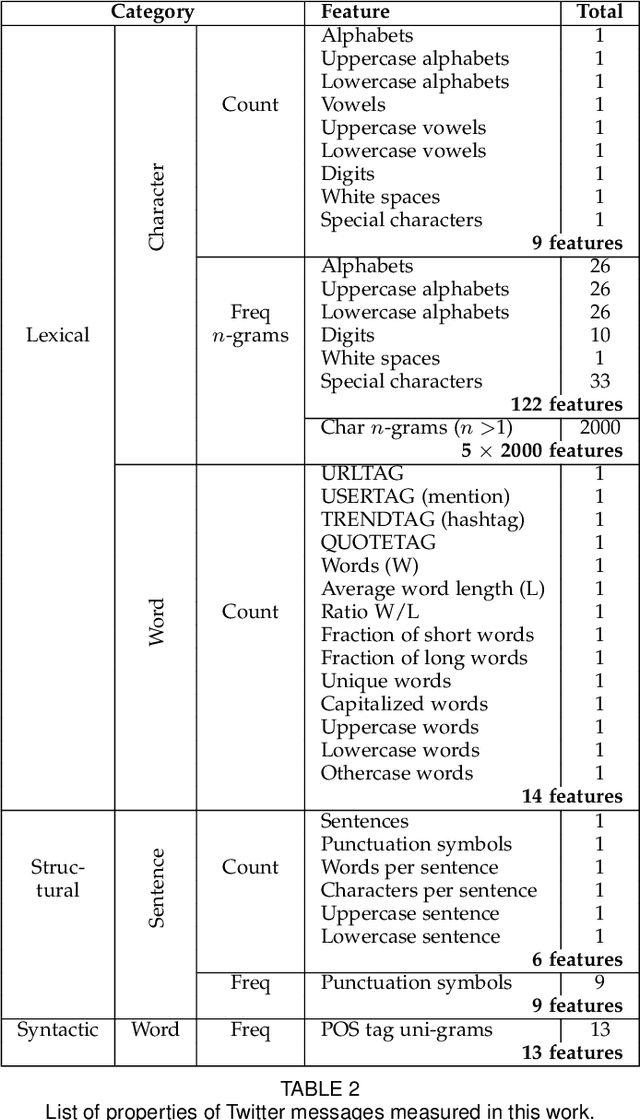Nicole Mariah Sharon Belvisi
Forensic Writer Identification Using Microblogging Texts
Jul 31, 2020



Abstract:Establishing the authorship of online texts is a fundamental issue to combat several cybercrimes. Unfortunately, some platforms limit the length of the text, making the challenge harder. Here, we aim at identifying the author of Twitter messages limited to 140 characters. We evaluate popular stylometric features, widely used in traditional literary analysis, which capture the writing style at different levels (character, word, and sentence). We use a public database of 93 users, containing 1142 to 3209 Tweets per user. We also evaluate the influence of the number of Tweets per user for enrolment and testing. If the amount is sufficient (>500), a Rank 1 of 97-99% is achieved. If data is scarce (e.g. 20 Tweets for testing), the Rank 1 with the best individual feature method ranges from 54.9% (100 Tweets for enrolment) to 70.6% (1000 Tweets). By combining the available features, a substantial improvement is observed, reaching a Rank 1 of 70% when using 100 Tweets for enrolment and only 20 for testing. With a bigger hit list size, accuracy of the latter case increases to 86.4% (Rank 5) or 95% (Rank 20). This demonstrates the feasibility of identifying writers of digital texts, even with few data available.
Forensic Authorship Analysis of Microblogging Texts Using N-Grams and Stylometric Features
Mar 24, 2020



Abstract:In recent years, messages and text posted on the Internet are used in criminal investigations. Unfortunately, the authorship of many of them remains unknown. In some channels, the problem of establishing authorship may be even harder, since the length of digital texts is limited to a certain number of characters. In this work, we aim at identifying authors of tweet messages, which are limited to 280 characters. We evaluate popular features employed traditionally in authorship attribution which capture properties of the writing style at different levels. We use for our experiments a self-captured database of 40 users, with 120 to 200 tweets per user. Results using this small set are promising, with the different features providing a classification accuracy between 92% and 98.5%. These results are competitive in comparison to existing studies which employ short texts such as tweets or SMS.
 Add to Chrome
Add to Chrome Add to Firefox
Add to Firefox Add to Edge
Add to Edge